While sauna bathing has several scientifically-proven health benefits, there is an ongoing debate about whether traditional (Finnish) saunas or infrared saunas are more effective.
As is often the case, the answer depends on the kind of experience and results you’re looking for. In fact, I own both a full-spectrum infrared sauna and a traditional sauna, and I utilize them in different use cases.
Here’s an overview of the key differences between the two sauna types:
- Infrared radiation is more effective than hot air for reducing pain and increasing blood flow, because it can penetrate tissue up to several centimeters.
- Near-infrared light is more effective than hot air for improving skin health, promoting collagen production and reducing fine lines and wrinkles.
- The hotter air in traditional saunas (which operate at higher temperatures than infrared saunas) is more effective at helping with respiratory issues because it helps open up airways.
- Infrared saunas are usually more energy efficient (and thus cost less to operate) than traditional saunas that leverage electrical heaters.
- Infrared saunas often emit more electromagnetic field radiation (EMFs) than traditional saunas that utilize electrical heaters or wood stoves.
In this article, I’ll share my take on the infrared vs. traditional sauna debate, based on both the latest scientific evidence and biometric data collected from my hands-on experience and testing.
A Note On Heat and Temperature
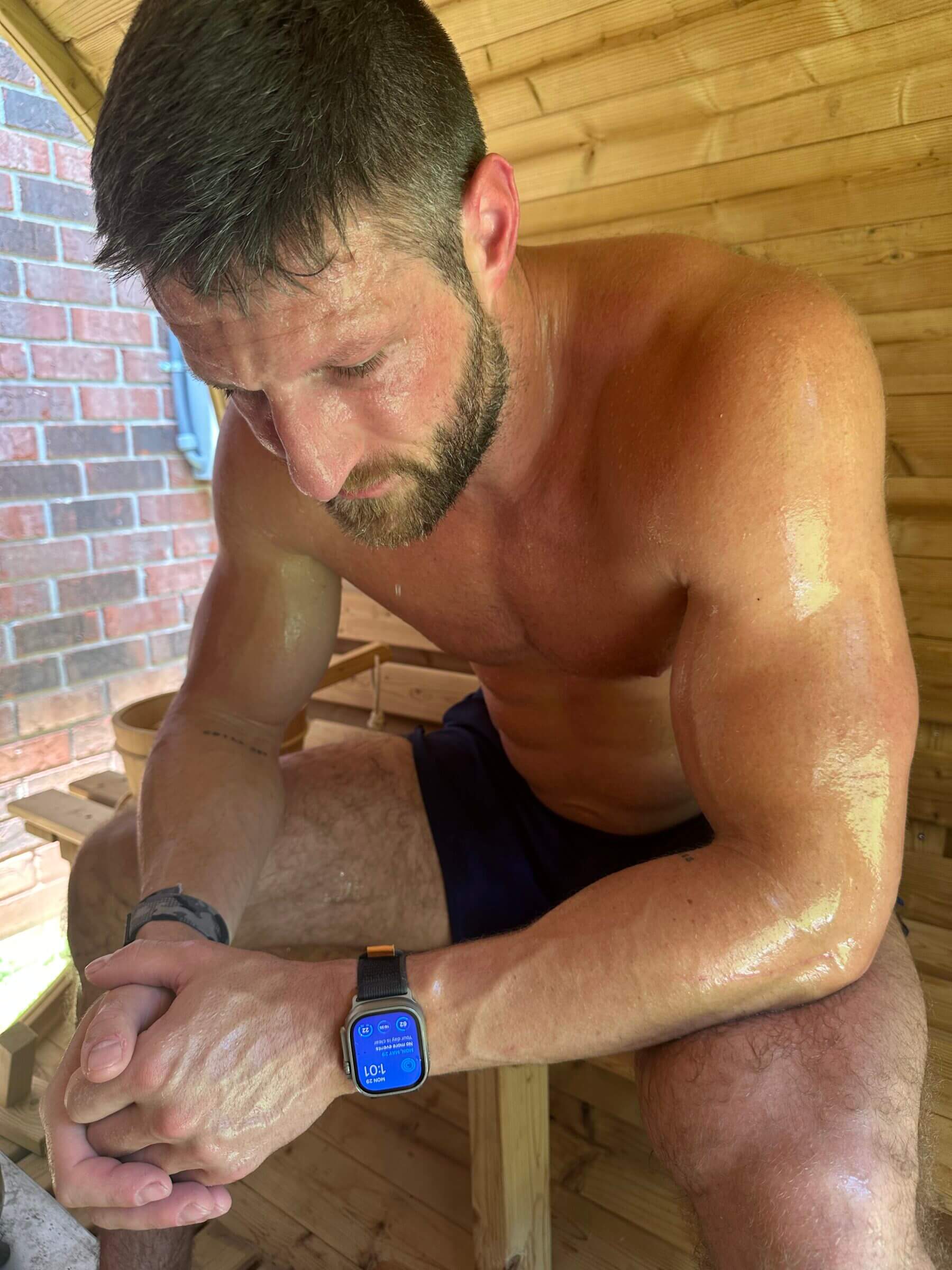
Most of the health benefits associated with sauna use — such as vasodilation and the release of heat shock proteins — stem from an increase in your body’s core temperature. Traditional saunas typically operate at much higher temperatures than infrared saunas, and their proponents argue that this translates into greater health benefits.
However, the fact is that your core temperature rises faster when more heat penetrates your tissue, and infrared radiation is significantly better at deeply penetrating tissue and delivering energy (in the form of heat) into your body than hot air is.
That’s why traditional saunas require much higher temperatures, and why comparing the two sauna types based on their average or maximum temperatures isn’t particularly helpful.
In other words, it’s not accurate to say that an infrared sauna is less effective because it maxes out at 160 degrees, as opposed to a traditional sauna that can reach 230 degrees. While both sauna types rely on heat, they deliver that heat in very different ways.
Keep that in mind when choosing which type of sauna to leverage.
Health Benefits of Infrared vs. Traditional Saunas
To give you a sense of how my body reacts to both types of saunas, I recorded select biometrics from three different sauna sessions, as shown in the table below. As you can see, all of the sessions triggered a significant stress response, which is illustrated by an increase in heart rate, respiratory rate and blood glucose, and a decrease in heart rate variability (HRV), which is a proxy metric for how much stress my body was under.
What this suggests is that you can get comparable benefits from either sauna type — at least with regard to the benefits that are rooted in heat stress (such as improved immune function and cardiovascular health). Some benefits, like airway support, improved skin health, or deep-tissue pain relief, depend on humidity or light (in the red and infrared spectrum).
| Sauna Type | HR (Max) | HRV (Avg) | Respiratory Rate (Max) | Glucose (Max) | Temp (Max) | Calories Burned |
|---|---|---|---|---|---|---|
| Infrared | 132 bpm | 10 ms | 35 breaths per min. | 131 mg/dL | 160 F | 216 |
| Traditional (Dry) | 128 bpm | 12 ms | 31 breaths per min. | 119 mg/dL | 230 F | 225 |
| Traditional (Steam) | 135 bpm | 9 ms | 33 breaths per min. | 136 mg/dL | 220 F | 185 |
Just keep in mind that the performance and specifications of your chosen sauna model both play a significant role in the benefits it can deliver.
For example, a traditional sauna that doesn’t get hotter than 170 degrees Fahrenheit won’t provide the same benefits as one that heats up to 220. A similar principle applies to infrared saunas, where heater type and emissivity play a significant role in overall effectiveness.
With that data in mind, here’s an overview how infrared and traditional saunas compare with regard to the key health benefits offered by sauna bathing in general.
1. Muscle and Joint Pain Relief
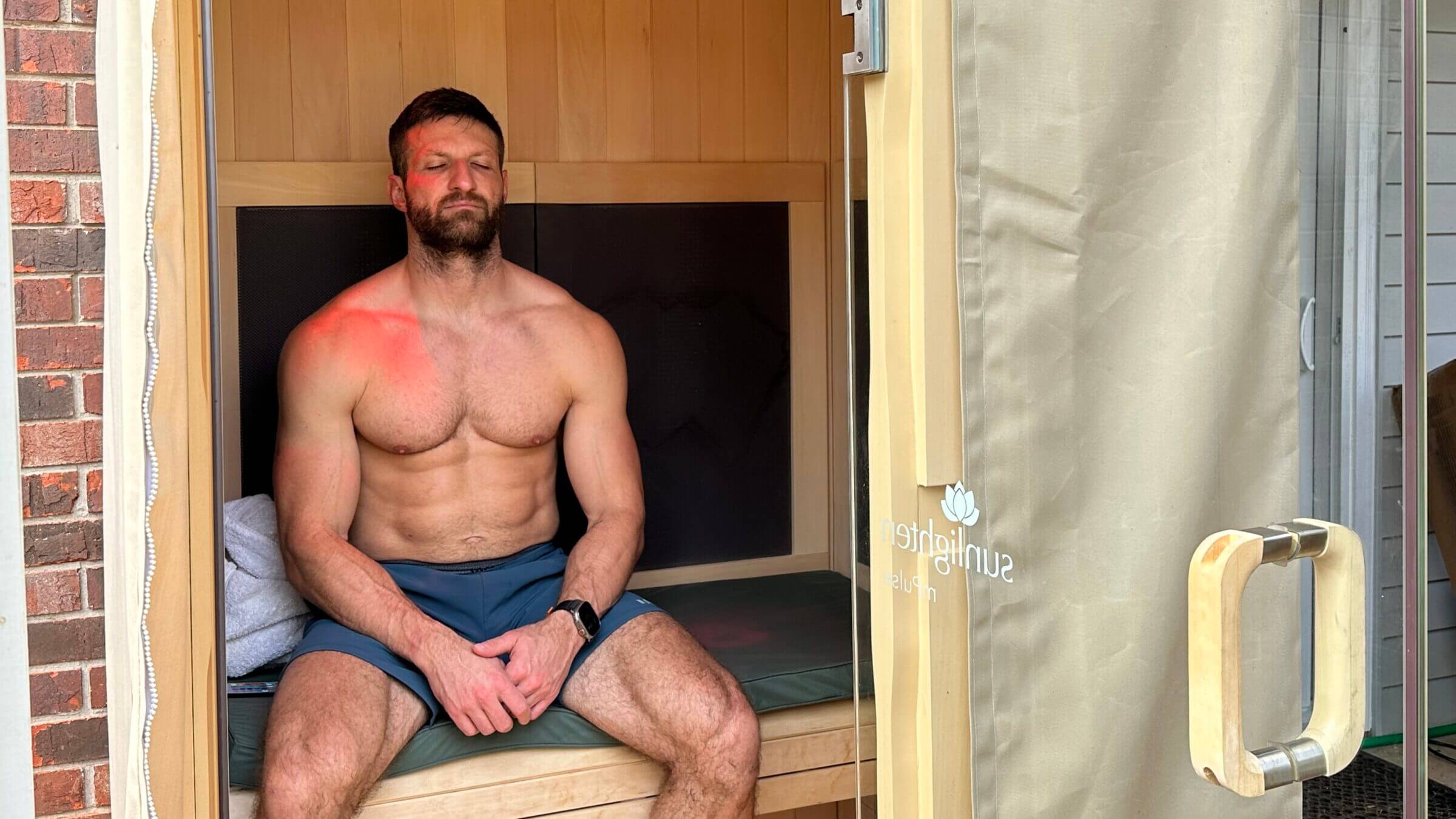
Exposing yourself to high heat causes blood vessels to dilate (widen), which increases oxygenated blood flow throughout your body and helps you cool down. However, this heat-induced increase in oxygenated blood flow can also be used to treat muscle and joint pain.
That’s because tissue heals faster when more oxygen and nutrients (such as amino acids, enzymes, vitamins and minerals) are available. Plus, the brain releases pain-blocking molecules (such as beta-endorphins), that are delivered via the bloodstream in response to inflammation.
While both infrared and traditional saunas can increase oxygenated blood flow, I’d argue that infrared saunas have a leg up when it comes to treating muscle and joint pain because they offer deeper tissue penetration, which means that more blood vessels (i.e., the ones located deep in the tissue) get dilated (thus leading to more overall blood flow to the target area).
That’s why I usually use our Sunlighten infrared sauna when I want to treat sports injuries or aches; I know that the infrared radiation will reach the affected area, especially if I feel pain or discomfort in one of the larger muscle groups (such as my quads or glutes).
However, if I simply feel fatigued or exhausted after a long day or a hard workout, I enjoy the higher temperature of our Redwood Outdoors traditional sauna.
In summary, both sauna types are great for improving muscle recovery and treating little aches and pains. But if you suffer from specific injuries that require deep tissue penetration to speed up the healing process, an infrared sauna is likely the better choice.
2. Cardiovascular Health

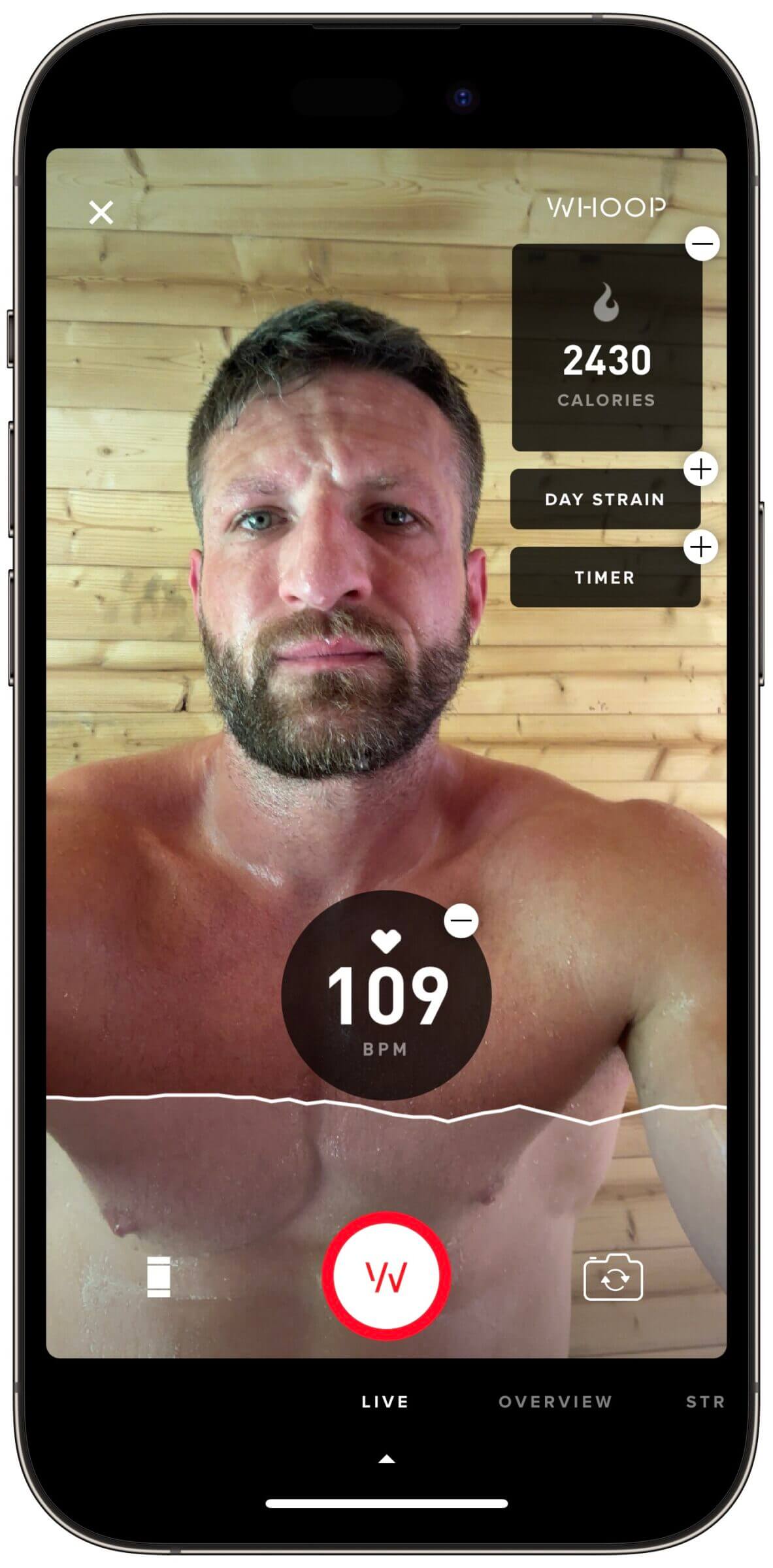
One of the reasons sauna bathing positively impacts your heart health is because heat stress causes your blood vessels to dilate, which increases blood flow, gives your blood vessels a workout, and temporarily decreases blood pressure. Additionally, the heat in a sauna increases your heart rate, which mimics a mild cardiovascular workout.
As I noted earlier in this article, I tested the relative cardiovascular effects of both sauna types by measuring several biomarkers, including maximum heart rate, heart rate variability (HRV), respiratory rate, blood sugar response and heart strain, with my full-spectrum infrared sauna set to 160° Fahrenheit and my traditional sauna set to 220-230° Fahrenheit.
As shown in the screenshots above, there was essentially zero difference between the two, with the infrared sauna topping out at 132 BPM and the traditional sauna topping out at 128 and 135 BPM (depending on the relative humidity inside the sauna). For what it’s worth, this is an increase of approximately 83-90 BPM compared to my typical resting heart rate (45 bpm).
The bottom line is that my data suggests there is no difference between infrared and traditional options when it comes to cardio health impacts.
3. Skin Health
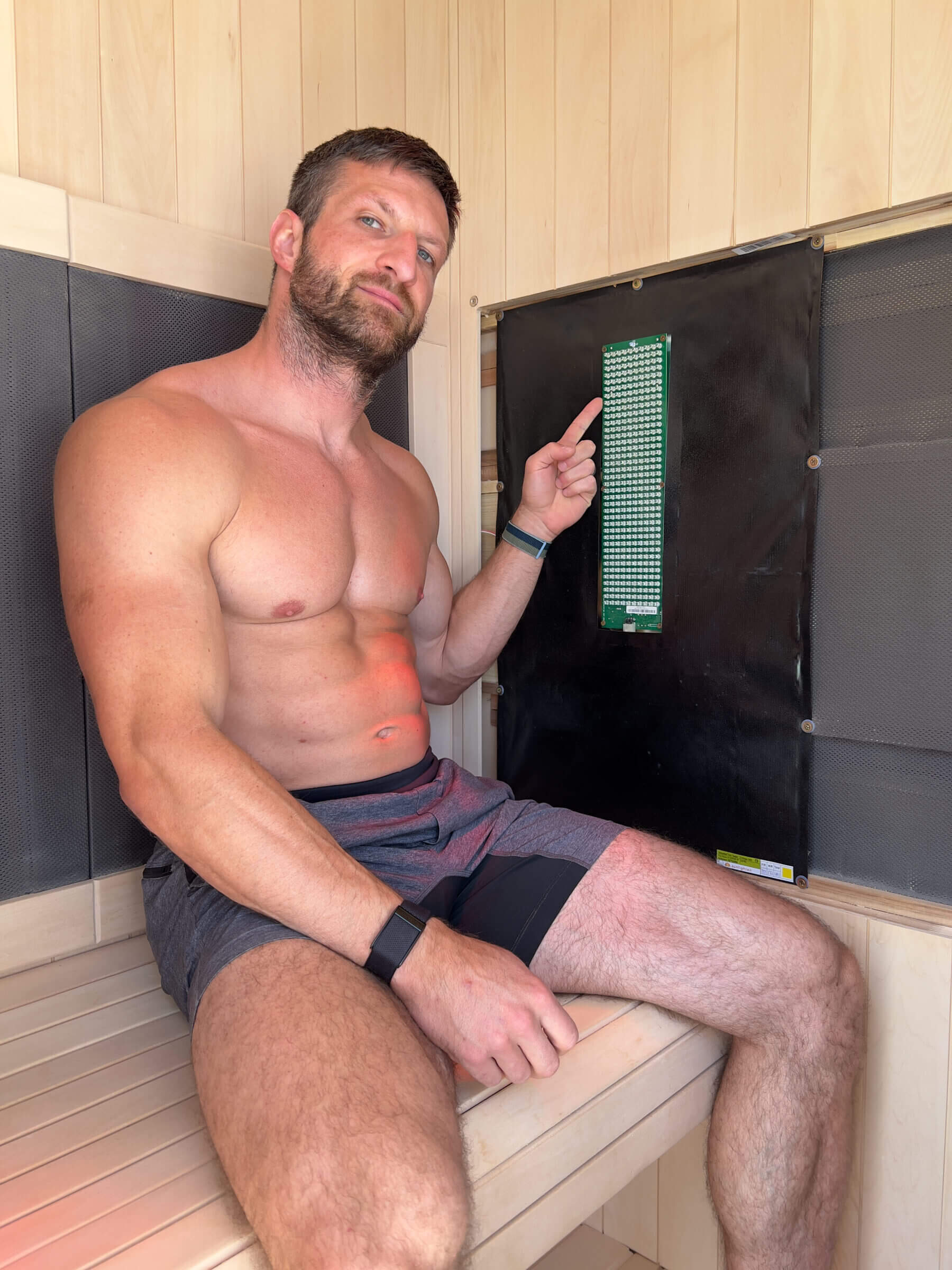
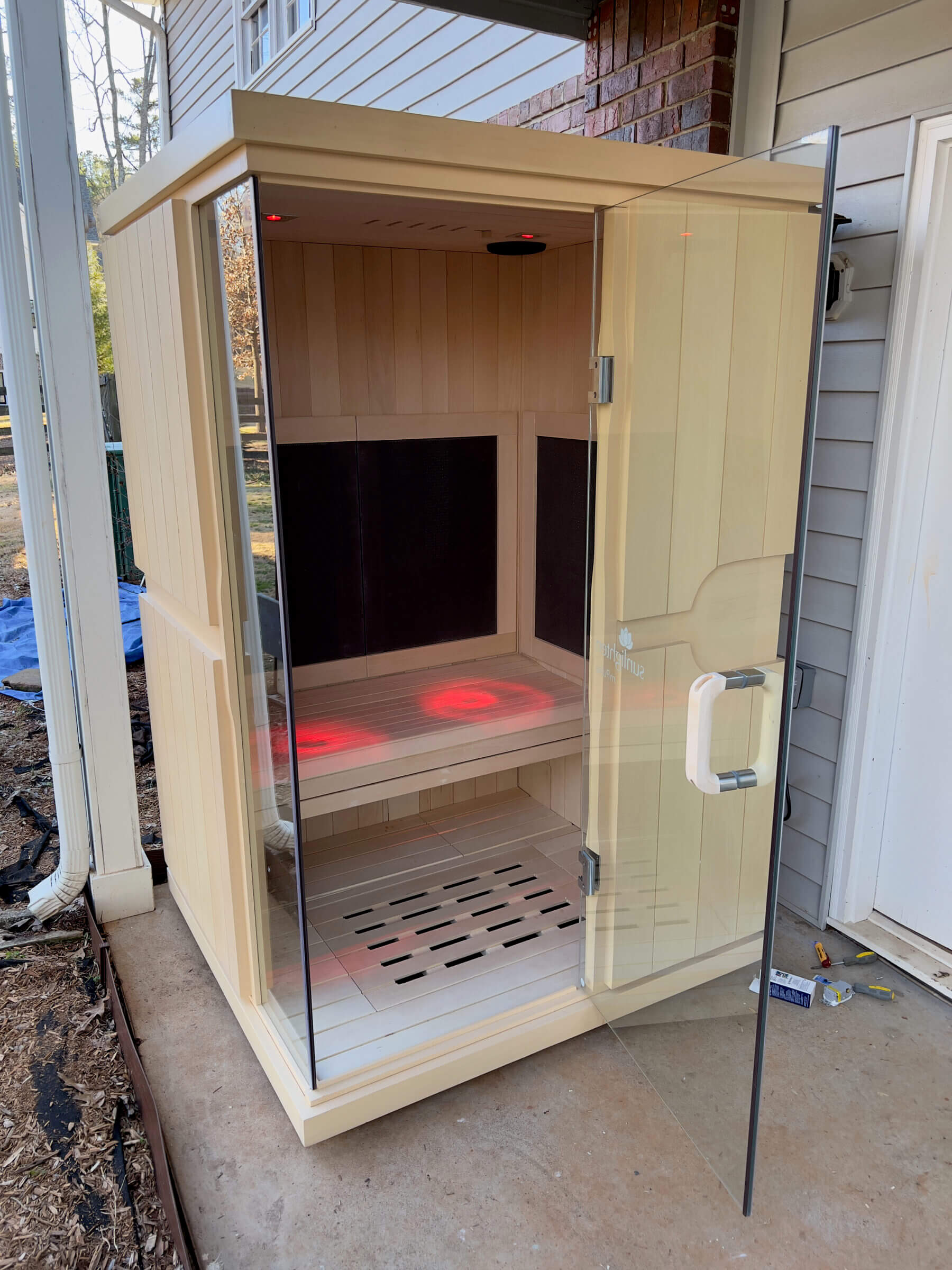
Improving skin health is one of the classic uses for red and infrared light therapy. This includes the treatment of scars and stretch marks, increasing collagen production in the skin, and making the skin more resilient to UV radiation.
In short, this is because red and near-infrared light both act as hormetic stressors for skin cells, which respond by making more collagen (which can help fill out wrinkles and fine lines), repairing damaged cells, and making the skin more resilient overall.
As a result, I highly recommend investing in a full-spectrum infrared sauna with red light if improving skin health is one of your health goals. (We own the Sunlighten mPulse.)
However, it’s worth noting that most of the benefits related to skin health stem from the visible and invisible light in the red and near-infrared spectrum. Most of the IR saunas on the market offer only far-infrared radiation, which is great for muscle recovery and improving cardiovascular health but doesn’t do much to improve skin health.
In other words, skin cells respond best to the specific wavelengths within the red (620 to 750 nm) and near-infrared (750 to 2500 nm) light spectrums. And unfortunately, full-spectrum infrared saunas are much more expensive than far-infrared saunas.
Traditional saunas don’t offer much benefit when it comes to wound healing or increasing collagen production in the skin. However, when used with humidity rocks, their higher humidity levels are excellent for improving skin hydration (which is an important factor in overall skin health).
The high heat produced by traditional saunas also improves blood flow in the skin, which can help improve its appearance — though likely not to the extent that full-spectrum infrared saunas can.
4. Immune Function

One of the reasons why people make sauna bathing a regular part of their wellness routine is because it’s highly effective for supporting the immune system. In fact, this is the main reason why we decided to add our first sauna to our home a number of years ago.
In a nutshell, saunas can improve immune function because prolonged heat stress triggers the release of heat shock proteins and other immune factors (e.g., white blood cells, neutrophils and interferons), all of which support the immune system and help fight various types of infections.
A study published in Annals of Medicine investigated the effects of regular sauna bathing on the frequency of common colds. Over six months, 50 participants were divided into two groups: one engaged in regular sauna sessions, while the control group abstained. The sauna group experienced significantly fewer episodes of the common cold, especially during the latter three months, suggesting that consistent sauna use may reduce susceptibility to colds.
That said, I have not seen any evidence suggesting that using a sauna during an active cold alleviates symptoms. However, at the Kummer household, we always use the sauna when sick and have had excellent success. I realize that’s anecdotal evidence and doesn’t prove sauna bathing can speed up the healing process, but if nothing else, it makes us feel better.
Unfortunately, most of the research I’ve come across has been conducted using traditional saunas (likely because they’ve been around for longer), making it difficult to compare the immune-boosting capability of the two sauna types.
However, most of the benefits related to improved immune function stem from increasing your body temperature (by simulating a mild fever), which is exactly what infrared saunas do well.
In other words, based on what we know about the mechanisms by which heat can influence immune function, there is no reason to think that one type of sauna is more or less effective than the other.
Based on the existing scientific evidence and our experience with sauna bathing, I strongly recommend leveraging regular heat therapy as a preventative measure against viral infections. If you do get sick, I encourage you to experiment with sauna use to see how it makes you feel.
5. Respiratory Health
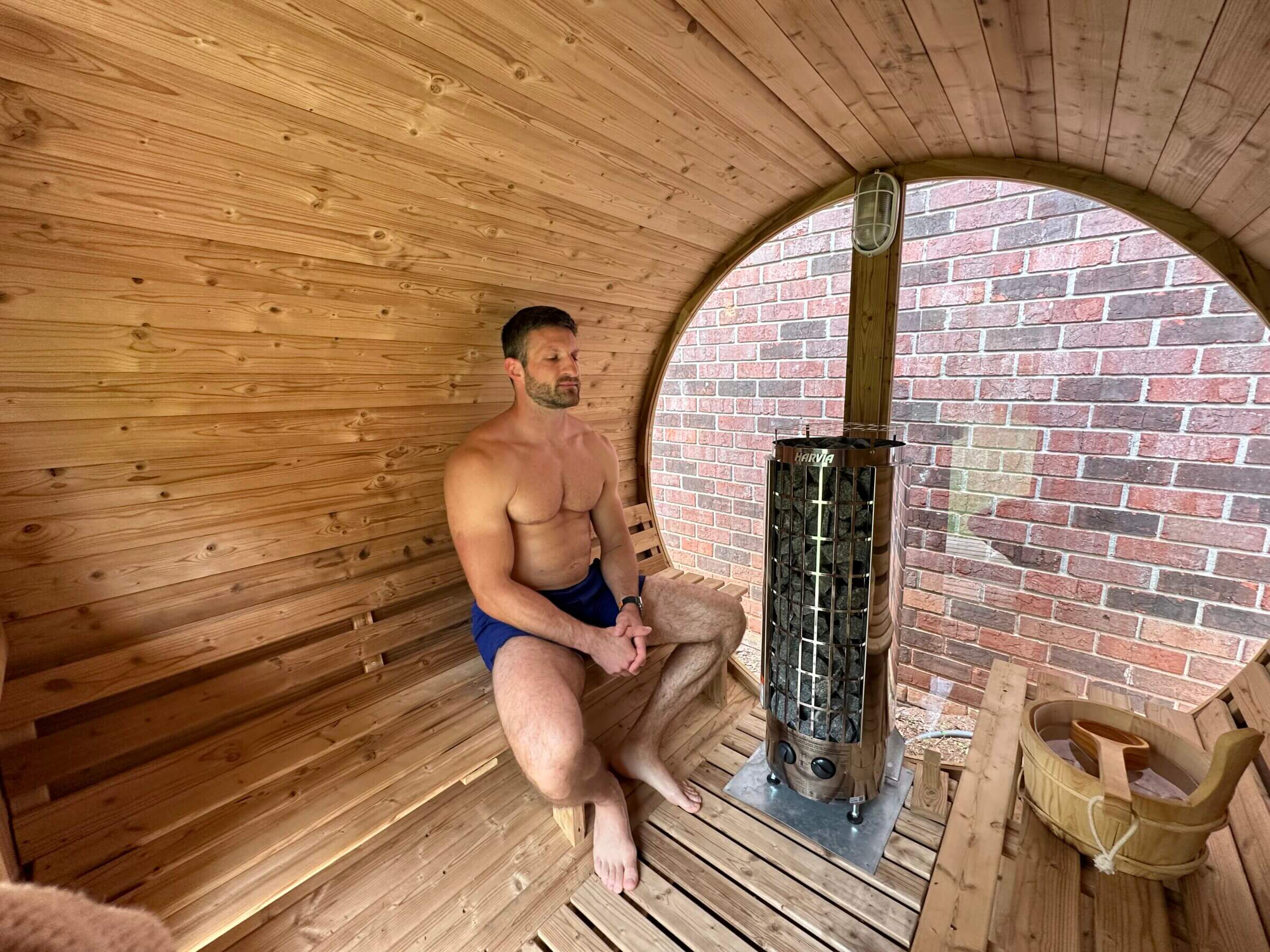
Traditional saunas often come with “hot rocks,” upon which you can pour water to create steam via the hot air inside the cabin. This steam can help open up airways and reduce symptoms in people with respiratory conditions, such as asthma and bronchitis.
In fact, a 2021 cohort study published in the European Journal of Clinical Investigation discovered that a combination of high fitness levels and frequent sauna baths was associated with, “a substantially lowered future pneumonia risk compared with each modality alone.” Another clinical trial, involving 50 study participants (divided into two groups), found that regular sauna bathing significantly reduced the probability of catching a cold.
Anecdotally, I’ve heard from many people who have had success with leveraging traditional saunas with steam to treat respiratory issues ranging from allergy-induced sinus congestion to viral infections and asthma.
Those reported benefits likely stem from the fact that the hot steam (in a traditional sauna) can improve mucociliary clearance (which is the body’s way of removing mucus and trapped pathogens or allergens from the airways).
While both infrared and traditional saunas can help up-regulate the immune system, thus reducing the risks of infections, I firmly believe that traditional saunas combined with steam have a leg up when it comes to improving respiratory health.
So if you suffer from chronic respiratory issues, I’d consider investing in a traditional sauna that offers steam production. If your goal is to reduce the risk of developing respiratory issues, such as viral infections, both sauna types can provide comparable benefits.
6. Hormone Production
Repeated heat stress causes a dramatic spike in human growth hormone (HGH), which is a major factor in tissue growth and metabolism (energy production in the cells). While research on the precise mechanisms is ongoing, scientists believe that the stress of heat, coupled with mild dehydration, plays a pivotal role in this spike.
Here’s a theory about how it might work…
When you subject your body to intense heat (in a sauna or other hot environment), your core temperature rises, causing an acute stress response. In an effort to protect your cells from damage and maintain homeostasis, your body ramps up the production of heat shock proteins, which are molecular “bodyguards” that help repair damaged proteins and enhance cellular resilience. This high-alert state signals the hypothalamus (a region in the brain that regulates hormone production) to stimulate the anterior pituitary gland, which in turn releases more HGH.
Meanwhile, the mild dehydration that often accompanies prolonged heat exposure further amplifies this effect by increasing the concentration of certain electrolytes and hormones in your bloodstream. Essentially, when fluids are lost through sweat, your body perceives another layer of stress, leading to an even more pronounced release of HGH as part of the adaptive response.
The net result is a surge in a hormone critical for muscle growth, tissue repair, and optimal energy metabolism.
The good news is that it doesn’t matter what the source of the heat is (ambient air or infrared radiation) as long as it’s hot enough to induce heat stress. For traditional saunas, I recommend ambient temperatures of 180 degrees or higher. For infrared saunas with high-emissivity heaters (95% or greater), I recommend at least 150 degrees.
Neuroscientist Dr. Andrew Huberman recommends this protocol to maximize growth hormone levels. Essentially, his advice is to use the sauna strategically, thinking less about frequency and focusing more on higher intensity sessions.
For example, you might aim for sauna sessions once per week (or even less), but when you do sauna bathe, go all-in with a routine like this:
- Start with 30 minutes inside the sauna.
- Step out and cool off for about 5 minutes.
- Jump back in the sauna for another 30 minutes.
After this initial round, take a break of at least a few hours. Later in the day, repeat this whole sequence again, totaling four intense 30-minute sauna sessions in a single day.
Yes, it’s intense… and yes, it’s effective.
For maximum growth hormone release, it’s best to enter your sauna sessions semi-fasted. Ideally, avoid eating for at least 2-3 hours beforehand. Lower blood glucose levels naturally trigger higher growth hormone secretion (similar to what happens overnight during deep sleep).
But don’t overdo it. Performing this protocol more than once per week can blunt the growth hormone spike you’re after. To further increase metabolic gains, alternate periods of sauna use with deliberate cold exposure during the rest periods.
While you can perform this protocol with either sauna type, I recommend using a traditional sauna if you want to include cold water immersion during your rest periods. That’s because you want intense heat to quickly reheat your body after getting out of the cold plunge, and most infrared saunas on the market aren’t hot enough to counter the drop in core temperature caused by spending a few minutes in ice water.
7. Weight Loss
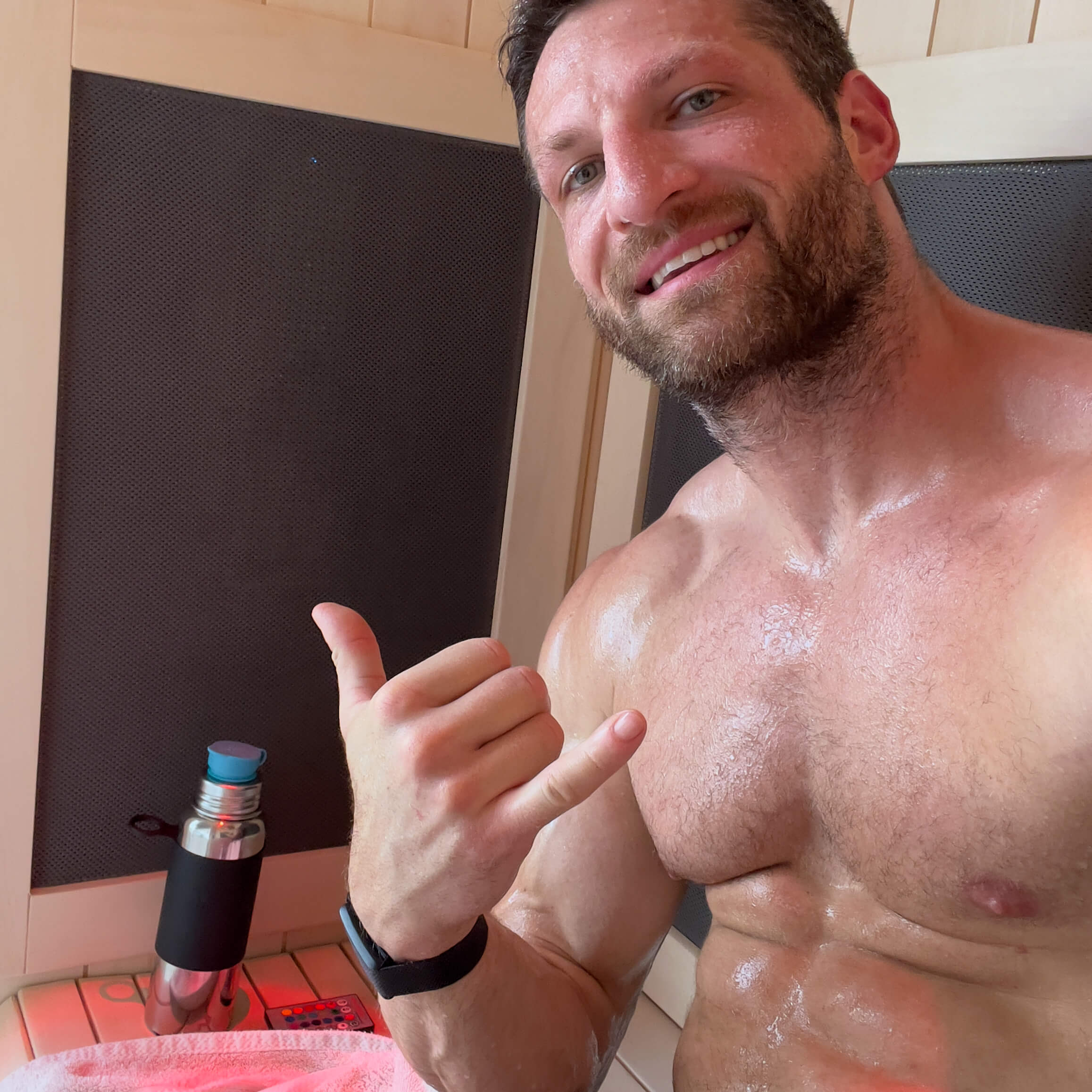
I firmly believe that maintaining optimal body composition is the byproduct of a healthy lifestyle, and that burning extra calories through exercise or sauna bathing is not a requirement for losing weight.
However, there is no doubt that exposing yourself to high temperatures that make you sweat profusely, and which increase your heart rate (thus mimicking a mild cardio workout), can help you lose weight faster.
While increased calorie burn is a direct benefit, the indirect benefits of sauna use may be even more powerful when it comes to weight loss. Lower cortisol levels, better sleep and faster muscle recovery all contribute to a healthier metabolism and more effective fat burning.
Chronic stress and poor sleep wreak havoc on hunger-regulating hormones like ghrelin and leptin, making you overeat even when you’re full. If you’re constantly stressed, your body clings to fat for survival — an ancient response to perceived threats, even if that “threat” is just a stressful inbox. Regular sauna use, however, helps regulate these hormones, creating an environment where fat loss happens naturally.
In that regard, both sauna types are equally effective in helping you lose weight. Just make sure you pair sauna bathing with a diet that supports healthy weight loss (one that’s devoid of processed carbs and seed oils), proper sleep hygiene, and the avoidance of environmental toxins such as xenoestrogens.
8. Stress Relief
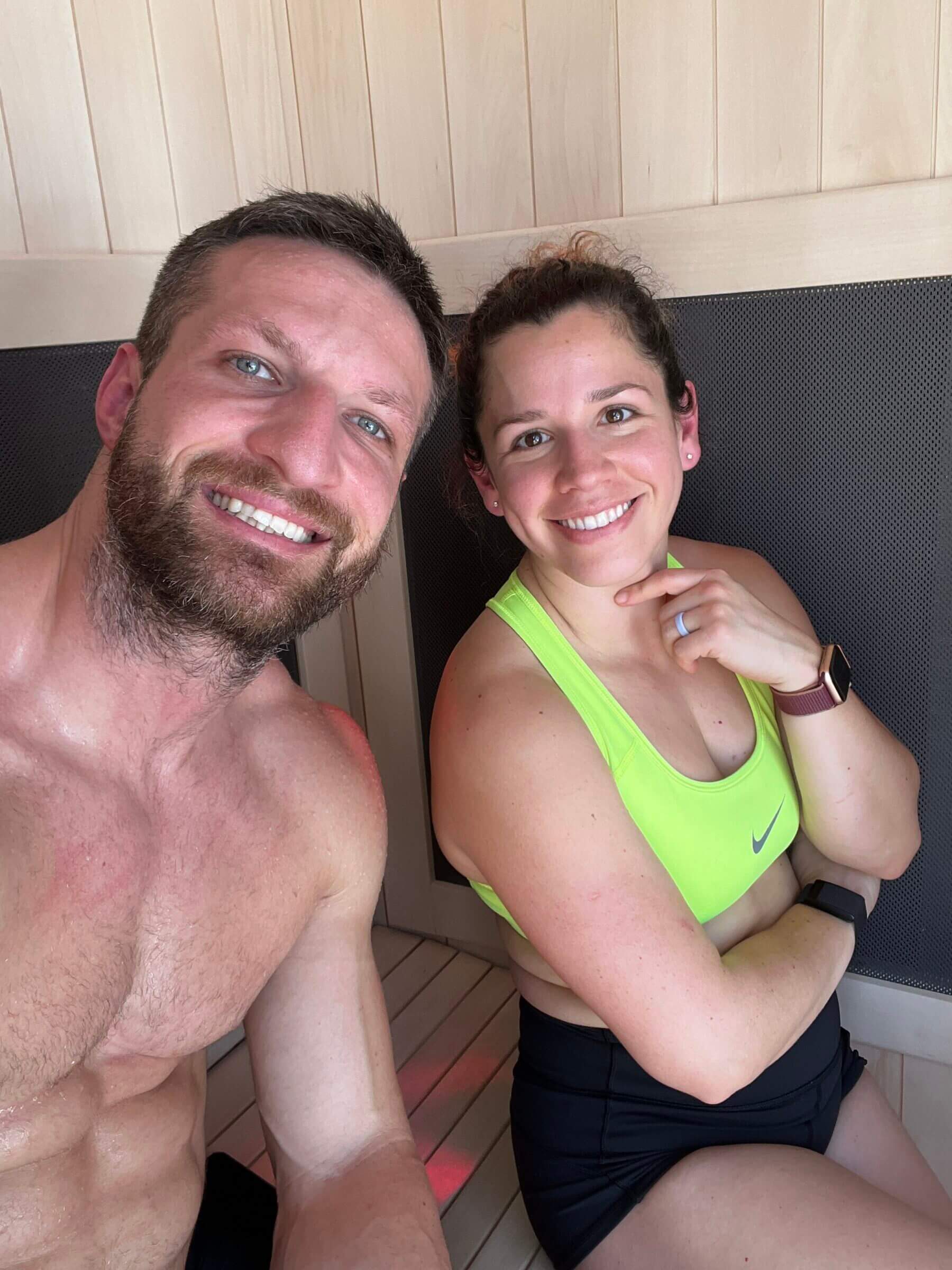
Regular sauna sessions spark a range of physical responses that help reduce stress. When your body heats up, your sympathetic nervous system kicks in, temporarily raising levels of stress hormones like cortisol. But over time, your body gets used to this kind of heat exposure. That adaptation actually helps your system regulate cortisol better, lowering your baseline levels and boosting your ability to stay calm under pressure.
Sauna heat also prompts your brain to release serotonin, which is the “feel-good” chemical linked to mood and relaxation. That’s because heat stimulates blood flow, activates heat shock proteins, and helps balance neurotransmitter activity. The result? You leave the sauna feeling more relaxed, mentally clear, and emotionally centered.
In everyday terms, this means that regular sauna use can rewire your body’s response to stress. By consistently exposing yourself to controlled heat, you’re essentially building a stronger, more adaptable nervous system. You’ll find yourself better equipped to handle life’s usual stressors, like tight deadlines, emotional challenges, or just the general chaos of a busy life.
That said, it’s important to go easy at first. Pushing your body too hard with long or very hot sauna sessions — especially when you’re already feeling overwhelmed — can backfire. You might end up feeling more drained instead of relaxed. So the key is to ease in: start with shorter, milder sessions and slowly ramp up as your body gets used to it.
In short, sauna bathing can be a powerful tool for managing stress — but only if you use it wisely. Treat it like any good wellness habit: start slow, listen to your body, and make it part of a balanced routine. When used mindfully, it can help you stay more grounded, resilient, and relaxed (especially when life gets hectic).
So, it’s important to listen to your body and to pick the right sauna temperature. Infrared saunas can offer an advantage in this regard because they operate at lower temperatures to begin with and, in contrast to electrical heaters and wood stoves, they allow you to dial in the exact temperature you want to expose yourself to.
Of course, there are those who enjoy the higher temperatures (and optional humidity) offered by traditional saunas, and who find that experience more relaxing than the relatively mild and dry environment of infrared saunas. This boils down to personal preference.
Anecdotally, both my wife and I feel equally relaxed and at peace regardless of the type of sauna we use.
Other Considerations
Besides the individual health benefits outlined above, there are other practical considerations when choosing between a traditional and infrared sauna, including:
- Ventilation.
- Heater type.
- Electromagnetic radiation.
- Electrical infrastructure.
- Power consumption.
- Volatile organic compounds (VOCs) and other toxins.
Ventilation

As I mentioned earlier in this article, traditional saunas — when combined with steam-production capabilities — operate at higher humidity levels than infrared saunas. This makes proper ventilation an important consideration if you plan on operating your sauna indoors.
Without proper ventilation, you increase the chances of mold and mildew growth, which can negatively impact your health.
We leave the door of our outdoor barrel sauna open for several minutes after each use to allow the humid air to escape. Of course, if you operate your sauna indoors, you have to ensure proper ventilation in the room the sauna is in. That could mean leaving a window open (assuming low humidity levels outdoors) or installing a dedicated exhaust fan (perhaps combined with a standalone dehumidifier).
The more convenient choice is to purchase a full-spectrum infrared sauna if you plan on operating an indoor sauna.
Heater Type
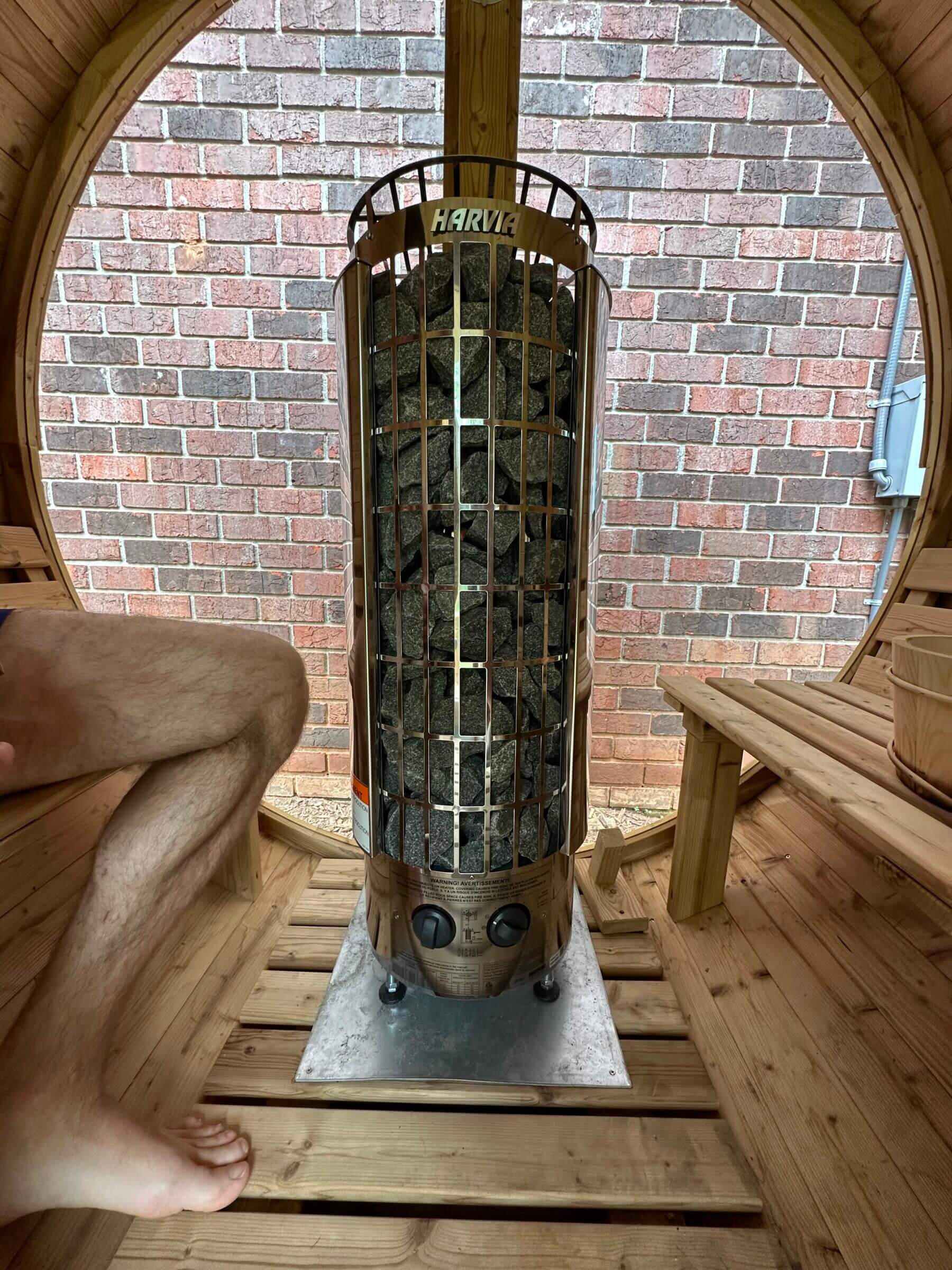
If you decide to invest in a traditional sauna, you often have a choice between electrical heaters or wood stoves. Up until recently, I would have recommended choosing an electrical heater because it’s easier to operate than a traditional wood stove.
However, I completely changed my opinion on that after my experience with Sweat Tent, which is a low-cost traditional sauna that comes with a wood stove.
While it’s still true that wood-fired saunas can be messier than other options, and may increase your risk of carbon monoxide poisoning, the risk is virtually zero with a well-maintained stove.
On the flip side, wood stoves offer the benefit of heating up quickly, and can produce substantial temperatures. Additionally, you won’t have to invest in upgrading your electrical infrastructure, which is a requirement for more powerful electrical heaters that operate on 240V and draw up to 50 amps.
Electrical Infrastructure
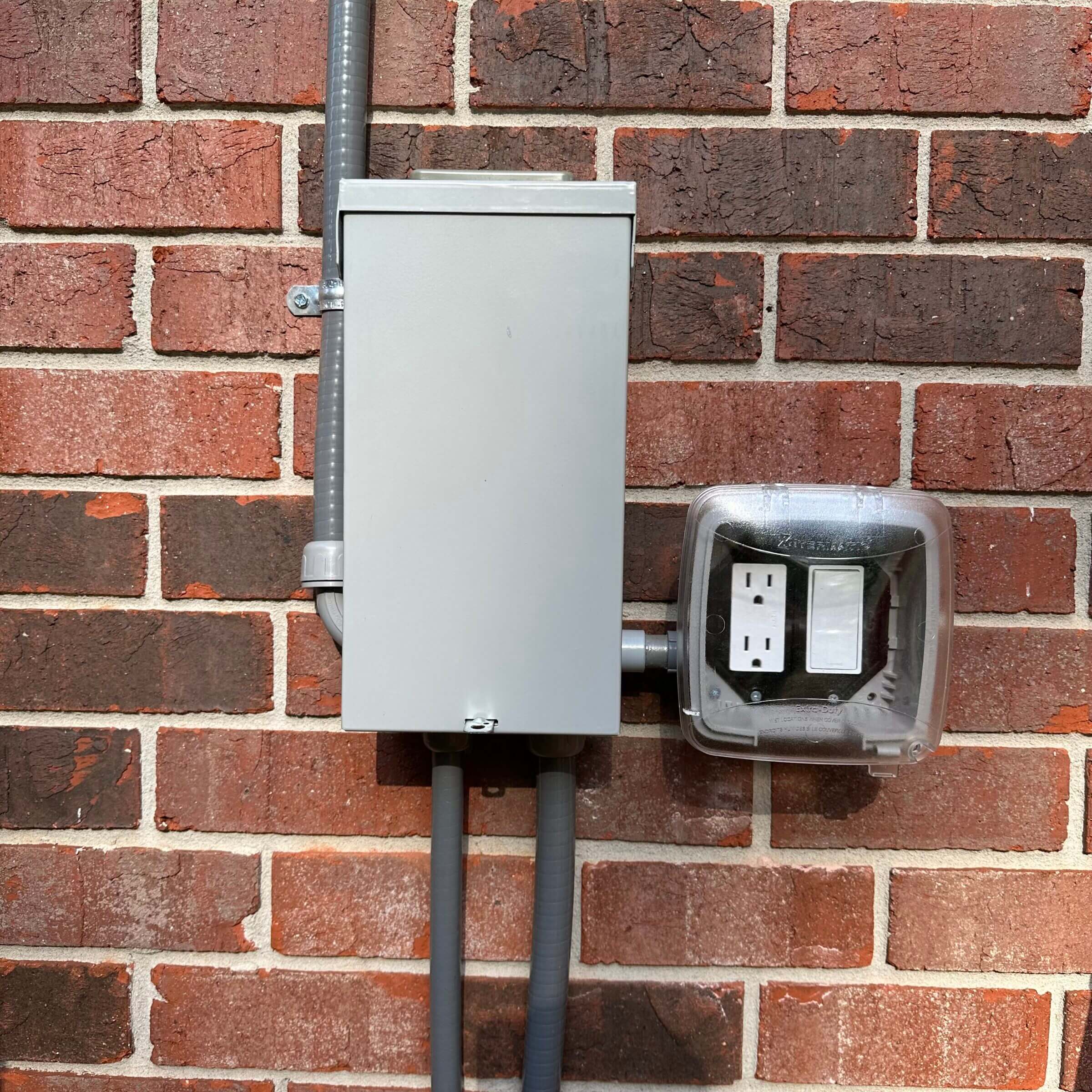
If you decide to go with an electrical heater or an infrared sauna, make sure you have the proper wiring in place.
For example, the 9 kW heater of our traditional sauna required a dedicated 50 amp line and a separate breaker box to meet local electrical code requirements. (You can learn more about that process in my Redwood sauna review.) This added an additional $3,500 to the cost of the sauna.
In comparison, our infrared sauna required only a 20 amp dedicated circuit and no breaker box, which cost us about $800 in electrician fees.
Electromagnetic Radiation
Many of the lower-cost infrared saunas on the market emit a significant amount of electromagnetic fields (EMFs) that can negatively impact your health. This is because cheap sauna models use wiring and heaters that are constructed without the proper internal shielding and patterns that would be necessary to reduce EMF emissions.
As a result, it’s important to make sure you pick a sauna vendor that tests its products for low EMF levels.
I encourage you to ask the vendor for EMF test reports, and compare that data with internationally accepted “safe” levels.
The United States doesn’t have any official EMF level guidelines, so I encourage you to check out those published by the European Union or other countries.
Traditional saunas are usually not significant EMF emitters, except for their electrical heaters.
Power Consumption
Traditional saunas that use electrical heaters can consume a significant amount of energy. For example, the heater in our barrel sauna draws 9 kW when operating at the highest temperature setting.
Here in Georgia, we pay approximately 5.8 cents per kWh in winter and between 6.2 to 10.6 kWh in summer for energy. As a result, a 30-minute session in our traditional sauna costs us between 54 cents and $1, depending on the time of the year. If we use the sauna three times per week, we will pay up to $12 per month for that luxury.
In comparison, the full-spectrum infrared heaters in our Sunlighten mPulse sauna draw only 2.4 kW and cost us less than $3.50 per month.
Those aren’t huge dollar amounts, but if you power your home using solar panels and batteries (like we do), it could mean the difference between staying 100% self-sufficient or buying power from the grid.
Toxins
When purchasing a sauna, make sure the manufacturer doesn’t use toxic materials, including glues and finishes that release volatile organic compounds (VOCs) that could harm your health.
I always recommend asking for test reports and third-party certifications before spending thousands of dollars on a sauna.
Traditional Saunas vs. Infrared Saunas: Final Thoughts

Both infrared and traditional saunas can help promote relaxation, reduce stress, and aid in weight loss by increasing heart rate and promoting sweating.
While full-spectrum infrared saunas provide unique benefits associated with skin health, traditional saunas (if paired with steam production) have a leg up when it comes to improving respiratory health. Some people also prefer the high temperature of a traditional sauna compared to the lower (and drier) heat of an infrared sauna.
And then there’s the question of sauna experience. Traditional saunas tend to feel more like what you expect a sauna to feel like (in part because of the much higher temperatures), and some people find that more relaxing. Infrared heat is just as effective at eliciting most of the health benefits outlined in this article, but you can’t discount the psychological and mental health aspects of sauna use. So to that end, I encourage you experiment with each style.
My wife and I enjoy both. We started out with regular infrared sauna therapy sessions (in our Sunlighten mPulse), and eventually purchased a traditional sauna (the Redwood Outdoors Thermowood Panorama). We also now have a super-portable single-person steam sauna (the SaunaBox).
Which one is right for you depends on your preferences and desired outcomes. But both types can deliver powerful health benefits when utilized as part of a consistent sauna bathing regimen.
Are you looking to add a home sauna to your wellness routine, or do you already own a sauna? If so, let me know what type you have and how you like it by leaving a comment below.
For more information about choosing an infrared sauna, check out my IR sauna buyers’ guide and my list of the best infrared saunas based on my hands-on experience.

Michael Kummer is a healthy living enthusiast and CrossFit athlete whose goal is to help people achieve optimal health by bridging the gap between ancestral living and the demands of modern society.
Medical Disclaimer
The information shared on this blog is for educational purposes only, is not a substitute for the advice of medical doctors or registered dieticians (which we are not) and should not be used to prevent, diagnose, or treat any condition. Consult with a physician before starting a fitness regimen, adding supplements to your diet, or making other changes that may affect your medications, treatment plan or overall health. MichaelKummer.com and its owner MK Media Group, LLC are not liable for how you use and implement the information shared here, which is based on the opinions of the authors formed after engaging in personal use and research. We recommend products, services, or programs and are sometimes compensated for doing so as affiliates. Please read our Terms and Conditions for further information, including our privacy policy.

Have you checked the steam sauna for emf emissions? Curious if all the power it takes to heat the rocks creates a emf surge?
Hey Leiif,
Great question! The heater does emit magnetic and electric EMFs when you turn it on but those levels drop rapidly with distance. In other words, the levels are negligible when you sit at a distance from the heater you normally would. In other words, as long as you don’t hug the heater, you’ll be fine.
Cheers,
Michael
in my research of this topic, this is the best article I’ve come across. thank you for this.
Thanks, Gina! I appreciate the feedback!
Nice balanced article. We own a 2-4 person traditional barrel sauna from Almost Heaven with an electric heater and love it. Costco offers a substantial discount that helped bring its cost down.
Thanks for the feedback, I appreciate it!
Hello Michael,
Great article. I have been waiting for this one!
I have an 8 year old, 2 person Infrared made by Golden Designs. The power supply went out recently. Can replace for $350 or upgrade to the Mpulse.